1916 Penny Coin Value: How Much Is It Worth?
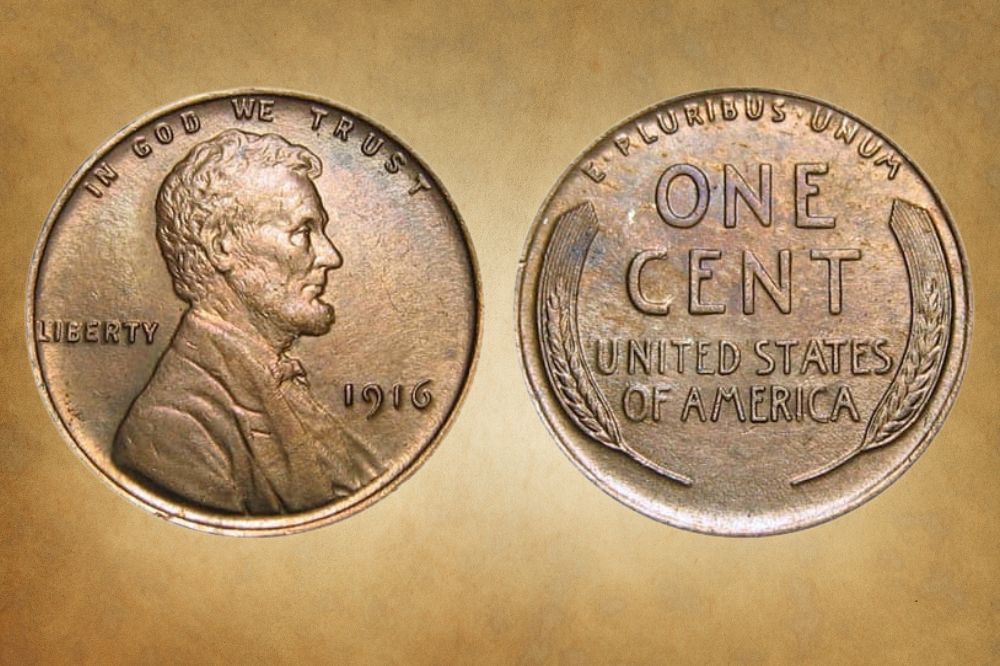
Did you know that 1916 pennies are pretty rare? They are possible to find, but most are hoarded in coin collections.
If you come across a 1916 Wheat penny, you should find out whether it is worth anything. The value of your coin will depend on factors such as its grade, condition, and the presence of a mintmark.
In this guide, I will help you discover your 1916 penny value. You will learn about the historical significance of the Wheat penny, the coin’s physical features that may have implications for its value, and a list of errors that might be worth thousands of dollars.
So, let’s jump in!
1916 Penny Value Chart
| Mint mark | Good | Fine | Extremely Fine | Uncirculated |
| 1916 No-mint mark Penny Value | $0.25 | $0.75 | $7.50 | $125 |
| 1916 D Penny Value | $0.80 | $3 | $24 | $2000 |
| 1916 S Penny Value | $2.25 | $5.25 | $35 | $2200 |
| 1916 Proof Penny Value | – | – | – | $7,300 |
1916 Penny Value Guides
In this section, we uncover the 1916 penny value. The value of your coin will depend on its condition, grading, presence, and type of mintmark.
The U.S. Mint produced four varieties of 1916 Wheat pennies that year. These include:
- 1916 No-Mint Mark Penny
- 1916 D Penny
- 1916 S Penny
- 1916 Proof Penny
Let’s look at the value of each type of coin. Be sure to examine your 1916 Lincoln penny to identify features that might boost its numismatic value.
1916 No-Mintmark Penny Value
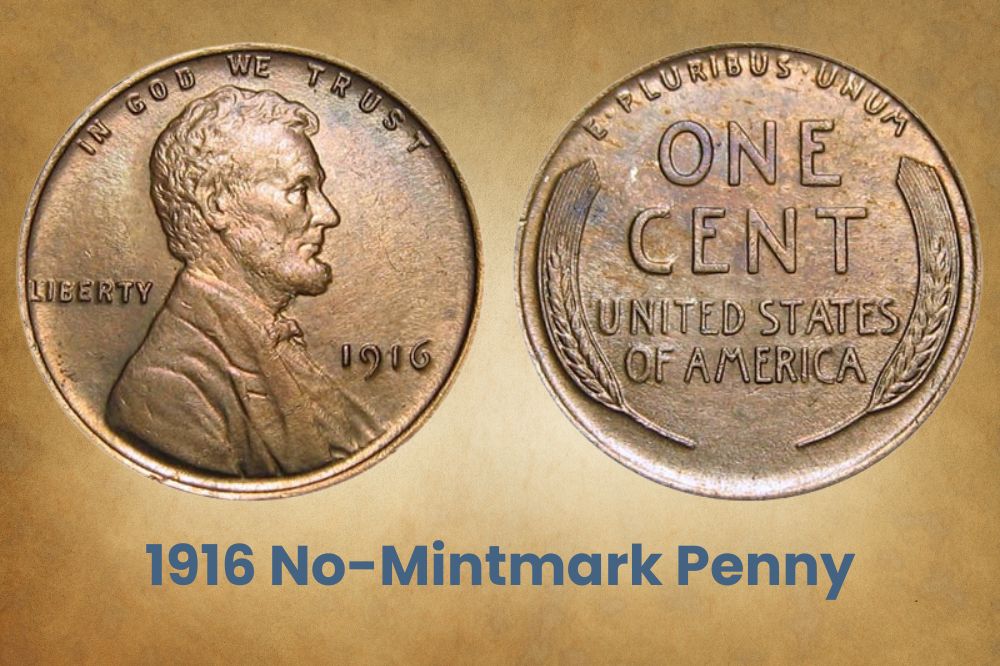
The 1916 Wheat pennies minted at the Philly minting facility do not spot a mintmark. A total of 131,833,677 were minted that year at the facility, making these coins quite abundant.
The 1916-P penny is not rare by any chance. It might be hard to find these coins in pocket change today, but that doesn’t qualify them as scarce; they are available in circulated condition in all grades. Most 1916 pennies were hoarded and hidden in private coin collections, taking them out of circulation.
In circulated condition, a 1916 penny is worth between $0.25 and $16.50. The coin can fetch up to $125 in uncirculated grades or more for red gem coins in mint state. The most expensive Wheat penny was graded mint state (MS) 67, and it sold for $8,338 at an auction in 2004.
1916 D Penny Value
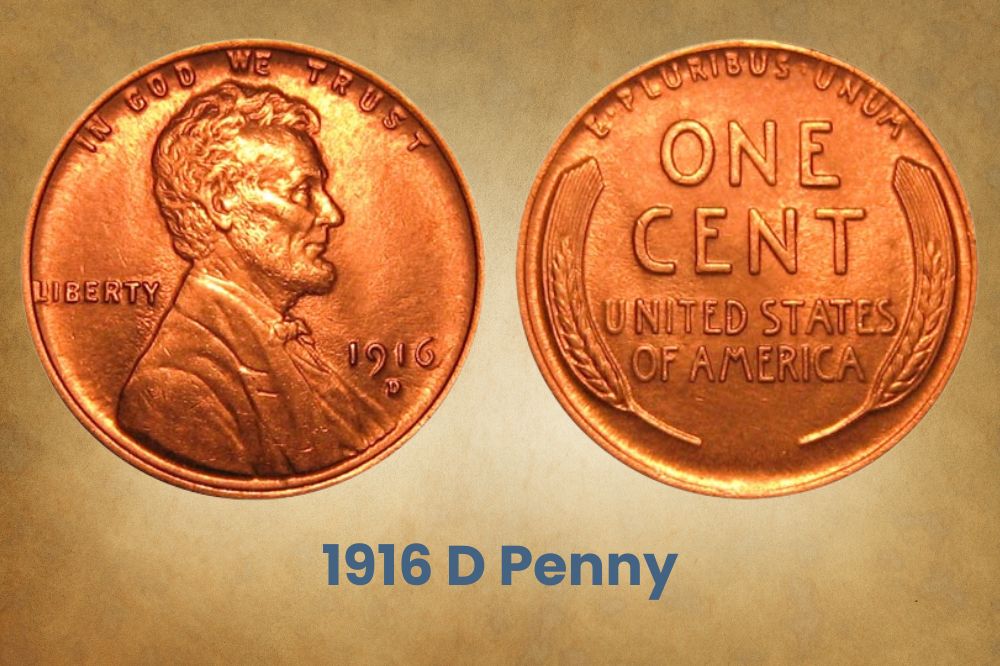
A total of 35,956,000 1916 pennies were minted at the Denver mint facility. Like their Philly counterparts, the pennies from Denver coins are abundant in all circulated grades but can be rare in uncirculated mint states.
Red, shiny 1916-D pennies are worth much more than their brown or red-brown counterparts in an uncirculated mint state.
You can expect your coin to fetch between $0.80 and $65 in circulated condition. Keep in mind that most of the 1916 D pennies are old, worn, and damaged so their value might be little.
In mint, uncirculated condition, your coin can fetch up to $2000 in grade MS 66. The most expensive red gem 1916-D penny was graded at MS67 and sold at $58,750 in 2016.
If you happen to come across a 1916 D penny, you should definitely hold onto it, especially if it has a lustrous, shiny red color. As you can see, such a coin could be worth thousands of dollars.
1916 S Penny Value
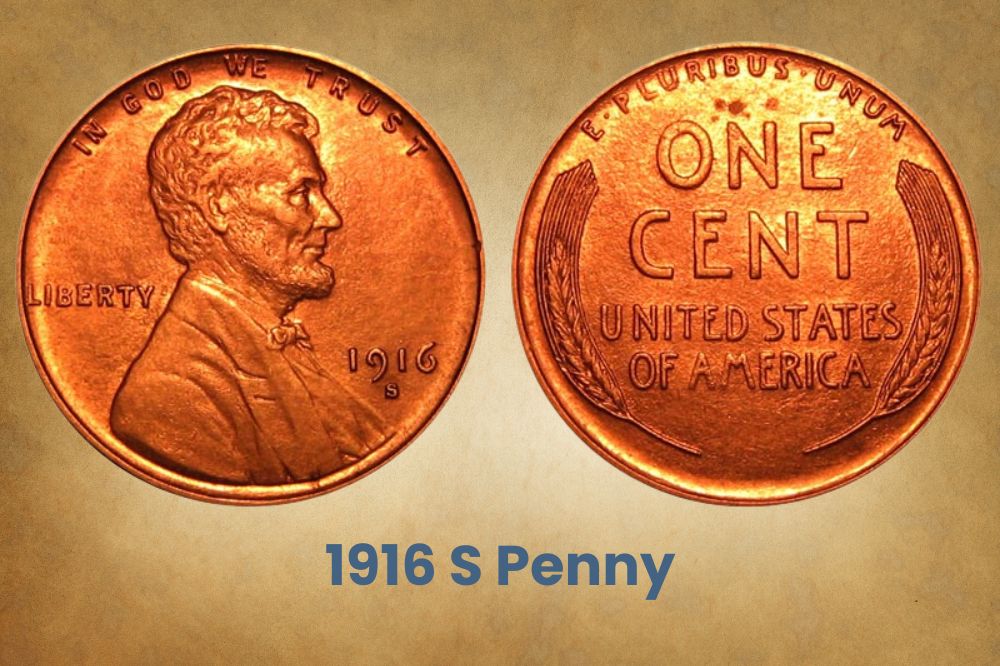
The 1916 S penny was minted at the San Francisco facility with a comparably lower mintage of 22,510,000. The coin has a mint mark S on the obverse underneath the date.
These coins are rarer than the no-mintmark and Denver pennies but there are still plentiful examples of the Wheat penny from 1916.
1916 S pennies are readily available in circulated condition in all grades. Examples become fewer and fewer in higher grades and extremely few in uncirculated mint states.
In circulated condition, a 1916 S penny is worth between $2.25 and $80, depending on the condition. The same coin might be valued at $2200 in mint, uncirculated condition, with the most expensive one selling for $27,600 in 2004 at only grade MS65.
1916 Proof Penny Value
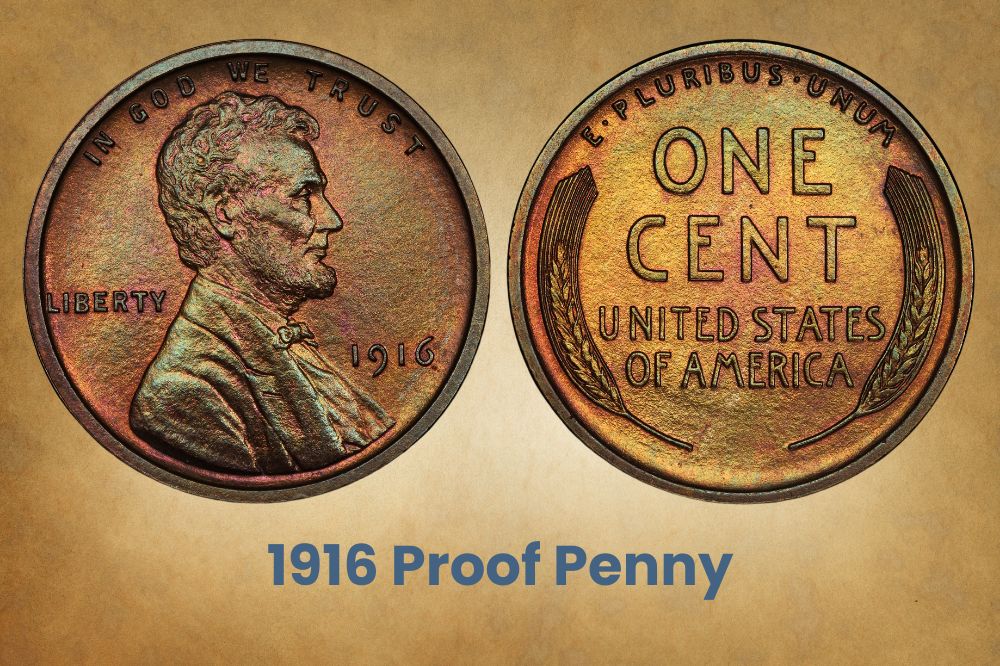
In 1916, the Philadelphia mint produced 600 proof coins for collectors. Proofs are different from regular coins because special dies make these high-quality coins.
The coins have a fine strike, a frostier luster, and a deeper cameo appearance. The 1916-proof pennies with a reddish finish are worth more than those with a bronze or brown metallic finish.
This coin is generally rare in all grades. Its rarity and physical appeal contribute to the high coin value. Expect your coin to fetch between $575 and $7,300 in mint state grades MS60 to MS67.
The most valuable 1916-proof penny was graded PF67 and sold for $34,500 in 2011. Red-gem proof coins are slightly more valuable than their brown or reddish-brown counterparts.
Related Posts: 16 Most Valuable Wheat Penny Errors
1916 Penny Errors
Error coins can sometimes be worth hundreds of dollars depending on the nature and extent of the error.
There are a few 1916 penny errors, but the existing examples range in value between $20 and $200 or slightly more.
Here are a few examples of 1916 penny errors:
1916 repunched mintmark penny error
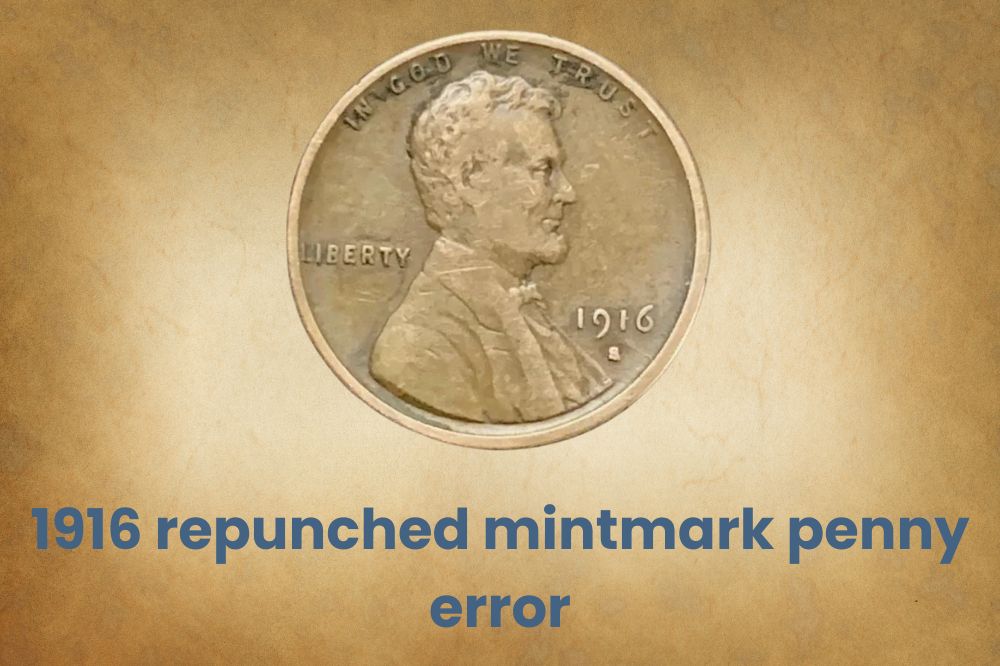
As the name suggests, a repunched mintmark error occurs when the striking die is applied twice to the blank planchet, making it appear like the coin has a double mintmark.
Repunched mintmarks are common and minor and therefore do not significantly impact the coin’s inherent value. A repunched mintmark penny error is generally valued at between $5 and $20, depending on the coin’s overall condition.
1916 doubled die penny error
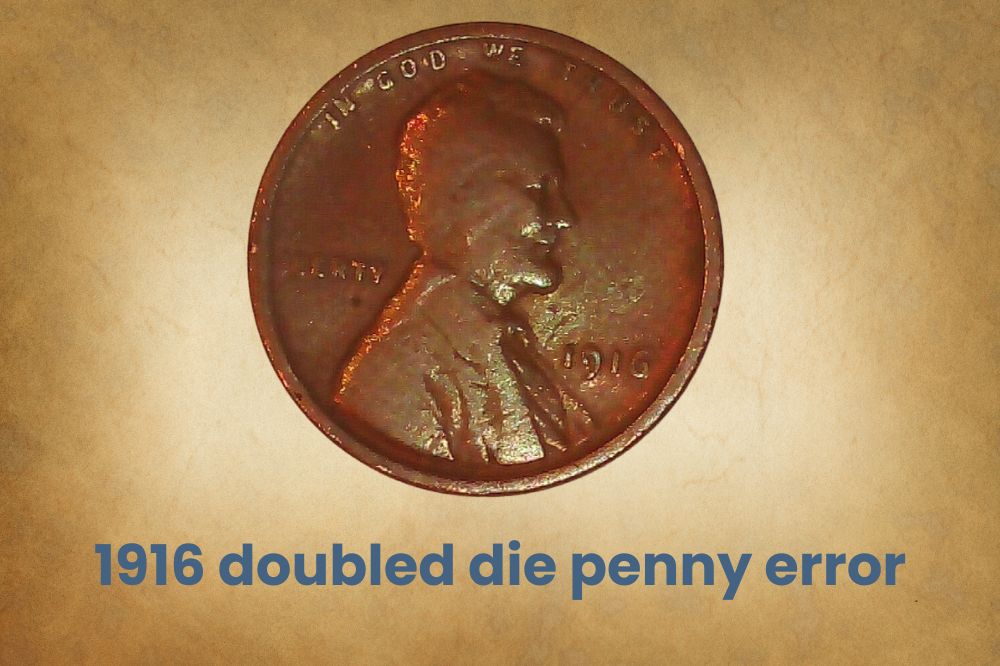
Doubled die are among the most well-known errors, some of which can fetch a neat sum. There is at least one known example of the 1916 Wheat doubled die penny. This particular example is noticeably thicker around the top of the coin where the words E PLURIBUS ENUM and wheat stalks appear.
The market value of 1916 doubled die penny error coins fluctuates constantly, but you can expect your error coin to fetch between $35 and $55.
1916 die crack penny errors
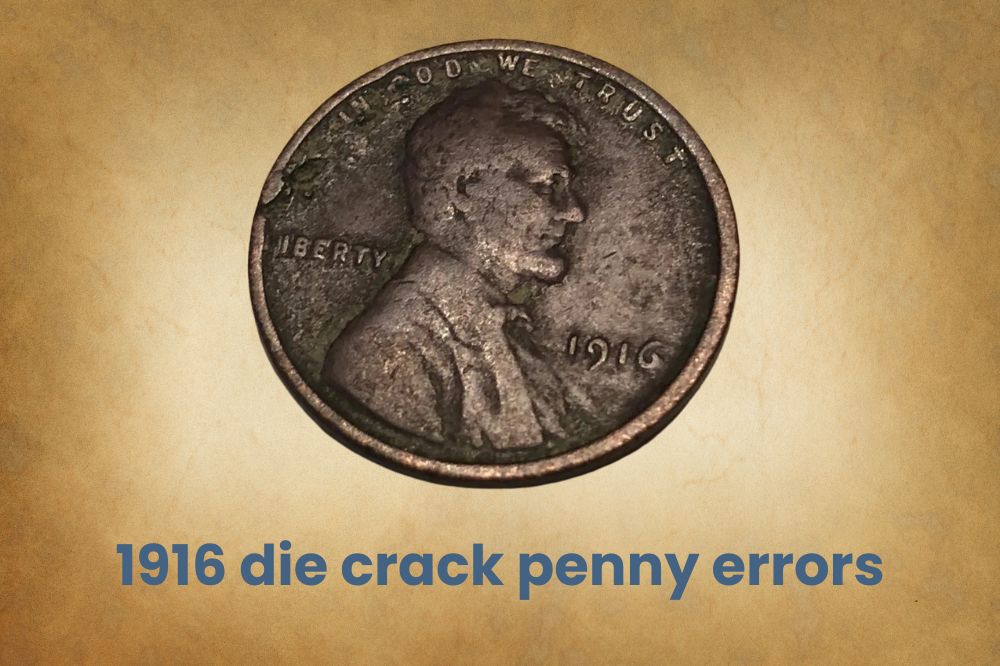
During the striking process, old or damaged dies can cause splits or bumps on the coin’s surface or around the rim. Small bumps or cracks are worth less than bigger, more visible ones.
The 1916 pennies with minor die crack errors are worth between $2 and $10, while those with a major cud or crack are worth as much as $200 or more depending on how dramatic the error is and other factors, such as the error’s location on the coin.
1916 Off-center penny errors
Off-center penny errors can be worth a neat sum and improve the coin’s value depending on the off-center percentage.
This error occurs when the black planchet and die are misaligned. So, instead of the die applying the design on the center of the coin, the design appears toward the coin’s edge in any direction.
This misalignment can result in part of the design missing. The value of a 1916 penny with an off-center error depends on how much of the design is missing.
Error pennies in which more than 50% of the design is off-center or missing can be worth more than $100. Coins with just 1% to 10% of the design missing may only fetch between $10 and $25 at most.
Related Posts: 19 Most Valuable Lincoln Memorial Penny Worth Money
History Of The 1916 Penny
Throughout the history of the United States, there have been numerous Lincoln coins, but the Wheat penny series is undoubtedly a collector’s favorite.
The Lincoln wheat penny was the first U.S. coin to feature a human portrait. The only other human-like portrait was that of Lady Liberty, but it was not human but a personified symbol.
Upon seeing President Abraham Lincoln’s sculpture by Victor David Brenner, President Roosevelt conceived the idea of immortalizing Lincoln on a coin.
Brenner had never worked with coins before and had only created medals. His lack of experience was a concern for U.S. Mint Chief engraver Charles Barber, who required Brenner to make many design changes before finally achieving the desired design.
While the designer Brenner was keen on creating a complex design for the coin, Barber wanted a simple one that would be easy to strike and wouldn’t wear down the coin. Ultimately, they agreed to lower Lincoln’s portrait, allowing his face to appear toward the coin’s center, making it more spacious at the top.
The Lincoln Wheat penny was first struck in 1909 at the Philadelphia, Denver, and San Francisco mints. The coin’s design has endured the test of time, with only the reverse changing from time to time between 1958 and 1989.
The coin’s metal composition has also changed severally over the years. From the time the coin was first struck in 1909 to 1981, the Wheat penny consisted primarily of copper. The copper coin was later made of steel and then zinc.
The United States Mint struck more than 192,000,000 Wheat pennies (yes, close to a billion) in 1916.
Related Posts: 19 Most Valuable Wheat Penny Worth Money
How to Identify 1916 Penny?
Let’s now look at the physical characteristics of the 1916 penny. Familiarizing yourself with these features can help you distinguish between a coin that might be worth a lot and one that isn’t.
The Obverse Of The 1916 Penny
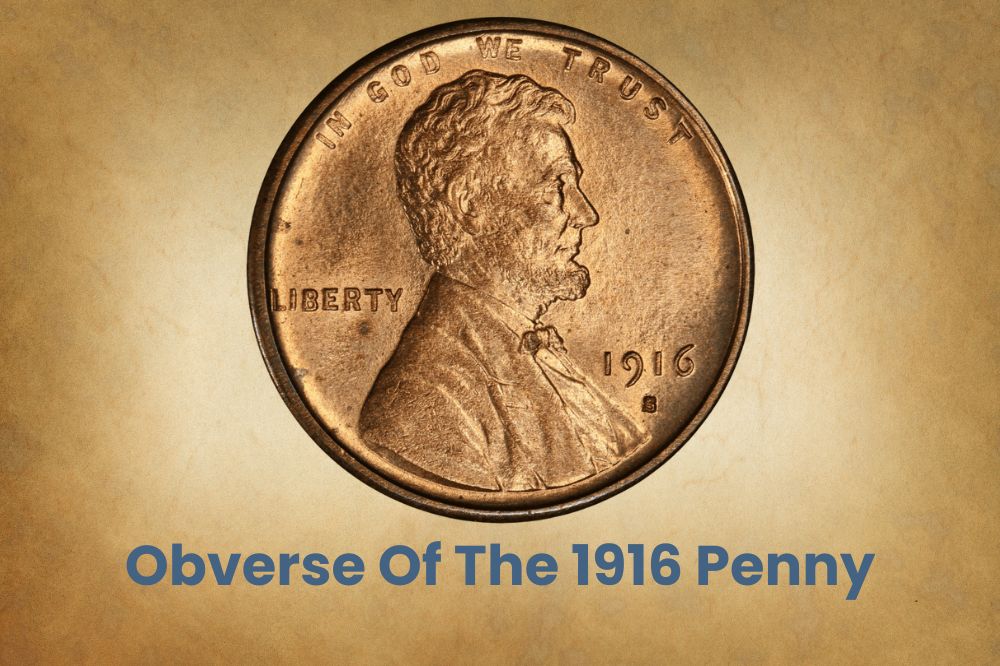
The obverse is the up side of the coin. The 1916 penny features the right-facing portrait of President Abraham Lincoln dressed in a tuxedo adorned with a bow tie.
The word LIBERTY appears on the left side of the coin, behind Lincoln’s upper back. The coin’s year of release, 1916, appears to the right, in front of the president’s chest.
The motto: IN GOD WE TRUST is inscribed around the coin’s top edge.
The Reverse Of The 1916 Penny
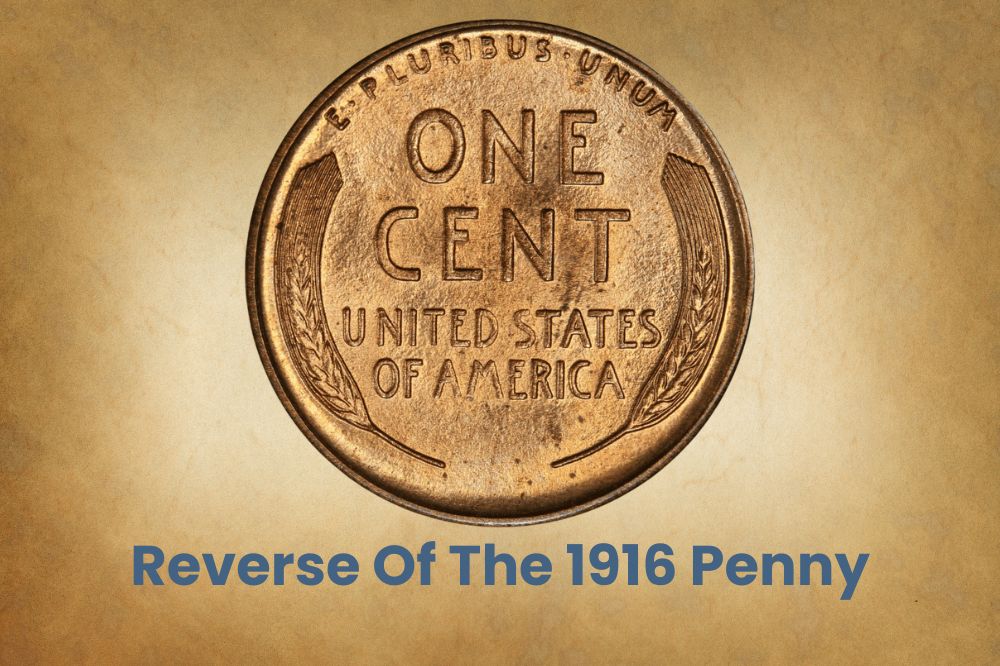
The reverse of the 1916 penny features two dominant wheat leaves on the left and right sides of the coin. The Wheat pennies derive their name from the coin’s reverse design.
The words E PLURIBUS ENUM are inscribed around the top edge of the coin.
The coin’s denomination, ONE CENT, is boldly inscribed in a large font at the center. Below the denomination are the words UNITED STATES OF AMERICA.
Other Features of The 1916 Penny
The 1916 penny is brownish-red in color due to its copper composition. It also contains 5% zinc and tin alloy.
The coin has a slightly raised collar and a smooth as opposed to a reeded edge. It weighs 3.11 grams and has a diameter of 19mm.
The mintmark for coins minted in Denver and San Francisco appears on the obverse underneath the date. The 1916 pennies produced in Philadelphia do not have a mintmark.
FAQS
Here are answers to common questions collectors have about the 1916 penny:
Is a 1916 penny worth anything?
Lincoln Wheat pennies from 1916 are mostly worn and damaged, but some coins are worth more than their face value. Whether your 1916 penny is worth anything will depend on several factors, such as the coin’s physical condition, mintage, presence of mint mark, and the availability of examples of errors. These coins are harder to find in mint uncirculated conditions, but they are worth significantly more in this condition than in any other.
Is a 1916 penny rare?
The answer is yes and no. A 1916 penny in mint, uncirculated condition is pretty rare, with only a few known examples available today. Most of the close to a billion pennies minted that year were released into circulation and many were hoarded in coin collections, creating an artificial scarcity. That said, it is possible to come across a 1916 penny in circulated condition in all grades, but these coins are generally worth at most $10.
